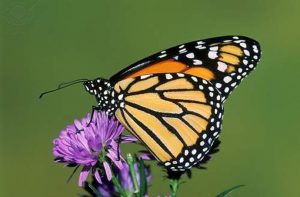Did you know that flowering plants have male and female part just like humans? The flowers are what help the plants make food and make more plants. When a bee or butterfly lands on a flower to drink nectar, the also carry pollen from one flower to the next. This process is called pollination. Bees, butterflies, bats, hummingbirds and even flies are important for pollination and help make food for humans. Kids of any age can learn more about how plants and their pollinators work together to make food with these books.
Although plants do not have any feet, they can still move throughout their entire life cycle. Find out about the many ways that plants move in Plants Can't Sit Still.
Some plants have colorful flowers that call out to various insects and animals. When choosing flowers and plants for your garden, consider the birds and insects you want to attract to help them grow. Read Flower Talk to find out what flowers will attract pollinators.
Plants provide butterflies, birds and other insects with food, which means they depend on one another. In Caterpillar and Bean, we learn about a butterfly's and plant's life cycle and observe how they grow.
In Monarch Butterflies, newly hatched larva grow in stages to become adult butterflies. Travel with them all the way to Mexico, where they will bring the next generation of butterflies to life.
Follow That Bee! to learn how bees dance for each other to communicate, build their homes with their spit and, most importantly, what you can do to save this endangered species.
After reading about these cunning plants and insect pollinators, take a trip (virtually or in-person) to the Garfield Park Conservatory to see how plants and insects interact up close. You may even find out why their cocoa tree doesn't have any pods.
Looking for ways you can help our pollinator friends? Join the Budburst Project with the Chicago Botanic Garden and become a community scientist. They'll teach you how to collect data to learn about how environmental changes affect plants. For more information on how you can participate, contact your neighborhood library or visit the Budburst website to order your kit.
Additional contributors to this blog post: Shilo and Kim




Add a comment to: Flowering Plants and Their Pollinators